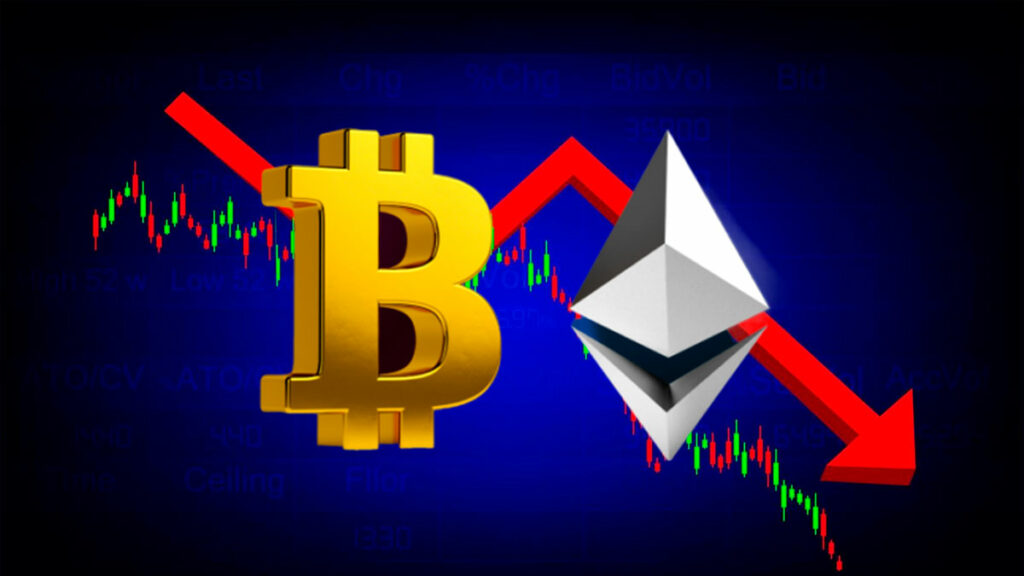TL;DR
- $250B Market Loss: The crypto market has shed over $250 billion in capitalization due to fears surrounding impending US tariffs.
- Investor Anxiety: Major cryptocurrencies like BTC and ETH face sharp declines as uncertainty drives investors toward safer assets like gold.
- Potential Long-Term Gains: Analysts suggest Bitcoin could benefit as a hedge against inflation and economic instability in the medium to long term.
The crypto market has been rocked by significant losses, shedding over $250 billion in market capitalization as fears surrounding impending US tariffs escalate. Major cryptocurrencies, including Bitcoin (BTC), Ethereum (ETH), Ripple (XRP), and Solana (SOL), have experienced sharp declines, with BTC approaching the ominous “death cross” technical pattern.
This downturn reflects growing investor anxiety over the potential economic fallout of President Donald Trump’s tariff policies. The tariffs, set to impact over $1.5 trillion in imports, are expected to be unveiled on April 2, dubbed “Liberation Day” by Trump. The announcement has triggered widespread market volatility, with investors retreating to safer assets like gold amid heightened uncertainty.
Ripple Effects Across the Crypto Landscape

The Economic Policy Uncertainty (EPU) Index has surged to levels 80% higher than those seen during the 2008 financial crisis, signaling extreme unease in global markets. This heightened uncertainty has led to a risk-off sentiment, driving sell-offs in speculative assets like cryptocurrencies.
Bitcoin, Ethereum, and other major tokens have seen double-digit percentage losses, further exacerbating the crypto market‘s fragility. At the time of writing, BTC and ETH are down a little over 1%, trading at around $82K and $1.8K.
XRP and Cardano stand as the biggest losers of the day, dropping between 3% and 5%, and trading at $2.06 and $0.60, respectively. SOL and BNB are also reporting losses amounting to between 0.80% and 1%, SOL trades at $124, while BNB is exchanging hands at $594.
The looming tariffs are expected to target up to 25 countries, with reciprocal measures likely to follow. This trade war scenario has amplified fears of stagflation, where slow economic growth coincides with rising inflation.
Long-Term Outlook: A Silver Lining?
While the immediate impact of the tariffs has been overwhelmingly negative, some analysts suggest that cryptocurrencies like Bitcoin could benefit in the medium to long term. As inflation rises and traditional markets falter, digital assets may emerge as hedges against economic instability.
Historical data indicates that Bitcoin’s perception as a “haven asset” often gains traction during periods of macroeconomic uncertainty. However, the short-term risks remain significant, with broader crypto market dynamics continuing to weigh heavily on crypto prices.










